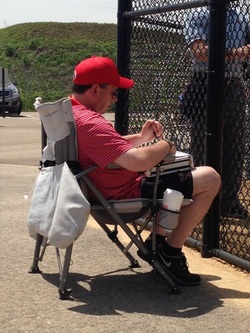But baseball moments have always had a tendency to stick to my cerebellum, or cerebrum, or cerebral cortex, or whatever part of the brain retains memory (if it’s science-related, those things typically get lost, too).
What makes baseball different from the other major sports is that it’s an individual game wrapped in a team sport. Every single pitch is batter vs. pitcher – or pitcher vs. batter. On any given day, something dramatic could happen. Every single game can create its own little story.
When I heard of Milt Pappas’ passing yesterday, I couldn’t help but think back to September 2, 1972. Yes, I remember the date. It’s one of those baseball things.
That was sort of a “Wonder Years” summer for me. I was just six years old, but baseball had begun mesmerizing me. Back then, there were only five real channels on TV in Chicago – 2, 5, 7, 9 and 11. You could mess around with the dial and try to find 32 and 44 – but there would have to be a reason to do it.
That was the summer of fighting with my brother over the one TV in the house. There were only so many kid shows to watch, although “Electric Company” was kind of cool. I wanted baseball.
And every Cubs home game was on Channel 9 … with Jack Brickhouse … in the afternoon. After summer camp, I’d race into the house and watch the last few innings when the team was in town. And if it was a glorious Saturday, I could watch a game from start to finish – either a Cubs game on WGN or the national Saturday afternoon NBC Game of the Week with Curt Gowdy and Tony Kubek.
On Saturday, September 2, 1972, the Cubs were at Wrigley Field to play the San Diego Padres and their ugly mustard yellow uniforms. I had a chance to watch a Cubs game from “Leadoff Man” to “The 10th Inning Show,” with a lot of running into the backyard to let everyone know what was going on – whether they wanted to hear it or not.
We all know the game story. Pappas not only had a no-hitter – he had a perfect game. Two outs … 3-2 pitch … perfect game on the line … and umpire Bruce Froemming didn’t raise his right hand on a borderline pitch.
I can still remember Brickhouse’s words as Pappas got ready to deliver the pitch: “Perfect game on the line … No-hitter on the line … Watch it.”
Pure magic … “Watch it.” Those words still resonate with me today.
And then … the pop up to one of my favorite early Cubs – Carmen Fanzone – to seal history.
“It’s a no-hitter for Pappas. A no-hitter for Milt Pappas.”
Hard to believe, but in the thousands of baseball games I have been to, I never have seen a no-hitter live. There were a few close encounters ended in the ninth inning – Jose Guzman, Alex Fernandez, Dan Spillner – but none crossed the finish line like it did that afternoon in 1972.
Two Saturdays later, I didn’t watch a game on TV. Instead, my Dad and my neighbors took me on my first excursion to Wrigley Field. Walking up the stairs from the concourse – and seeing the green cathedral sprawled in front of me – I was officially hooked. It didn’t hurt that the Cubs beat the Mets 18-5.
I talked to Milt Pappas several times through the years. To the end, he was bitter about not getting the call on the 3-2 pitch. I just wish I had thanked him for giving a little kid the sheer enjoyment of watching the drama unfold – and reeling me even more into becoming a baseball fan.

 RSS Feed
RSS Feed